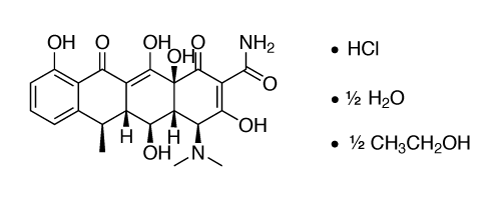RepTor™ Reagent Kit
-
Cat.code:
ant-doxbl-05
- Documents
ABOUT
Tetracycline derivative and selective antibiotics for Tet-on cell lines
The RepTor™ Reagent Kit comprises two antibiotics for the induction and maintenance of InvivoGen's HEK-RepTor™ and A549-RepTor™ cells:
– Doxycycline: for inducing the TiGer Tet-on system in RepTor™ cells
– Blasticidin: for maintaining the stable expression of the tetracycline repressor (TetR) in RepTor™ cells
Key features of Doxycycline
Doxycycline is a derivative of the tetracycline antibiotic. Doxycycline and tetracycline are widely used in conditional gene expression systems, whereby expression depends on the activity of the tetracycline-responsive repressor protein (TetR). Doxycycline has been reported to have a higher affinity than tetracycline for TetR.
- Doxycycline binds with high affinity to TetR.
- Doxycycline is a potent inducer of gene expression in the TiGer Tet-on system.
- Each lot of Doxycycline is highly pure and functionally tested.
Key features of Blasticidin
Blasticidin is an efficient selection antibiotic that acts on both eukaryotic and prokaryotic cells. The plasmid encoding the TetR and the blasticidin resistance gene bsr was stably transfected into HEK-RepTor™ and A549-RepTor™ cells.
- Selection of Blasticidin-resistant cells within one week.
- Low Blasticidin concentration is required for maintaining selection pressure.
- Each lot of Blasticidin is highly pure and functionally tested.
All products are for internal research use only, and not for human or veterinary use.
SPECIFICATIONS
Specifications
CONTENTS
Contents
-
Product:RepTor™ Reagent Kit
-
Cat code:ant-doxbl-05
-
Quantity:10 mg dox / 50 mg blasticidin
Shipping & Storage
- Shipping method: Room temperature
- -20 °C
- Avoid repeated freeze-thaw cycles
Storage:
Caution:
Details
Chemical structure of Doxycycline Hyclate

Mode of action of Doxycycline
Gram-negative bacteria feature a Tn10 operon coding a tetracycline resistance protein (TetA) and a tetracycline-responsive repressor protein (TetR). These proteins share a regulatory region comprising their respective promoters as well as operator sequences (tetO) [1].
The bacteria tetracycline resistance is mediated by TetA, whose expression is controlled by TetR. TetR dimers bind the tetO elements, thus suppressing the activity of tetA and tetR promoters. The binding of tetracycline (or doxycycline) triggers a conformational change in TetR dimers. TetR proteins are released from the tetO sequences and TetA is expressed [1, 3].
In the Tet-on conditional gene expression system, TetR is constitutively expressed and a gene of interest (GOI) is placed under the control of a strong promoter and tetO elements [1, 3]. TetR binds to the tetO sequences and represses the gene transcription. Upon incubation with doxycycline, TetR is released from the tetO sequences, and the GOI is transcribed [1, 3].
References:
1. Das, A.T. et al., (2015). Tet-on systems for doxycycline-inducible gene expression. Curr Gene Ther. 16(3):156.
2. Degenkolb J. et al., (1991). Structural requirements of tetracycline-Tet repressor interaction: determination of equilibrium binding constants for tetracycline analogs with the Tet repressor. Antimicrob Agents Chemother. 35(8):1591.
3. Kallunki, T. et al., (2019). How to choose the right inducible gene expression system for mammalian studies? Cells. DOI: 10.3390/cells8080796.
DOCUMENTS
Documents
Technical Data Sheet
Safety Data Sheet
Certificate of analysis
Need a CoA ?





